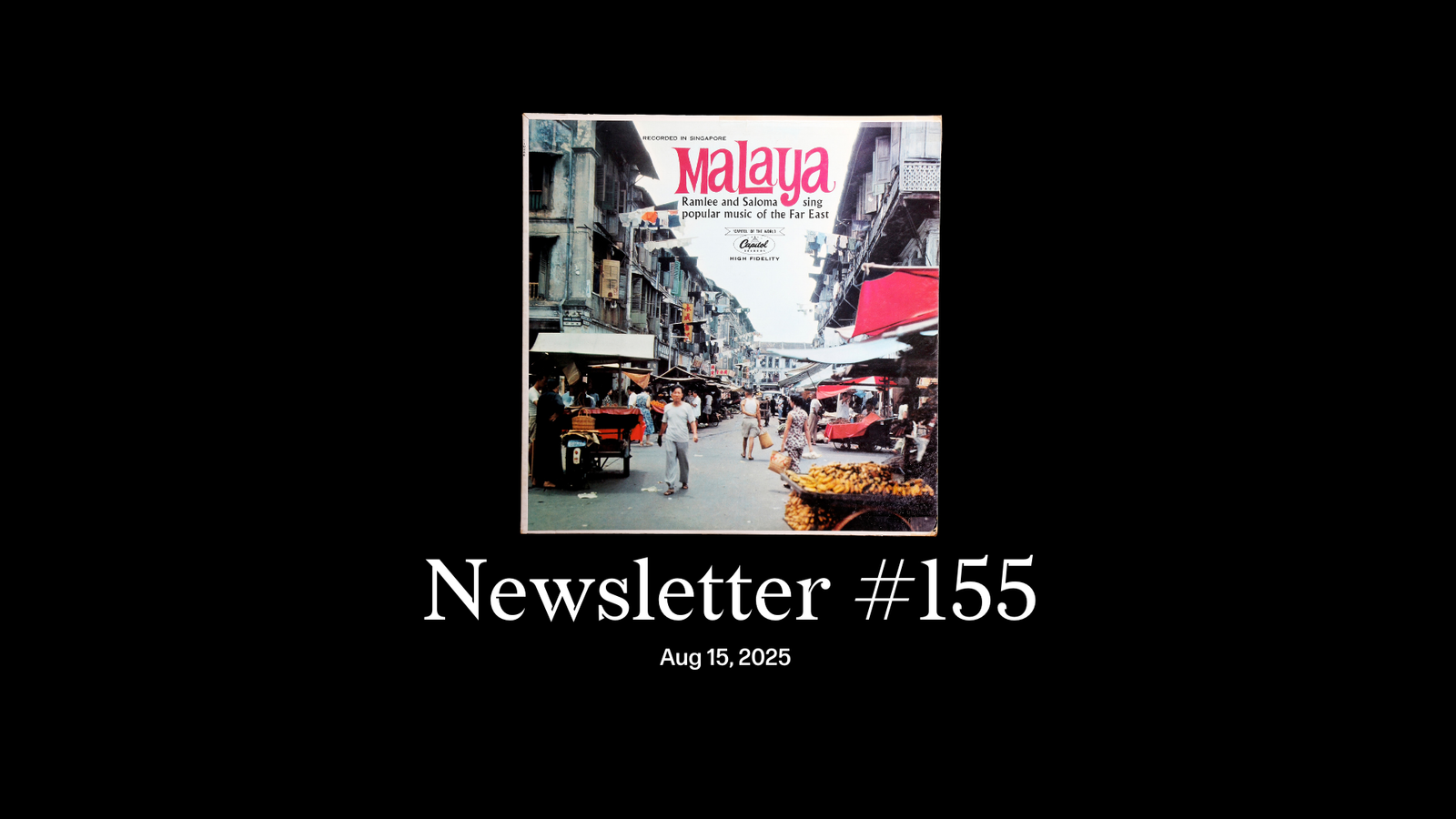Dear reader,
Listen. Last week, to commemorate Singapore’s 60th birthday, I drowned you in words. This week, I leave you with music, specifically a playlist of the golden era of Malay music, from around the time of independence. It’s been curated by Khir Johari, food historian and author of The Food of Singapore Malays, and Faris Joraimi, Jom’s history editor, and serves as an accompaniment to their essay this week.
Jom’s reader survey. If you’ve yet to fill it up, please take 10-15 minutes to do so. It’s the only way we’ll know how to serve you better.
- The enduring legacy of Rajinikanth, Thalaivar, doyen of the Tamil screen
- Why the heightened Malay representation at this year’s NDP matters
- What the squabble between KF Seetoh and Ong Ye Kung says about hawkers
- The Singaporean consumer’s love affair with East Asian brands
- Why does Prabowo Subianto’s government want to rewrite Indonesian history?
- Learning to listen at The Listening Biennial
- Ninja Van veering off course
And more, in our weekly digest. Read it now.
Essay: “Recorded past: how EMI made the best Malay music” by Khir Johari and Faris Joraimi
Faris and Khir are known independently for their wonderful prose that effortlessly, almost nonchalantly, reveals connections between Singapore and our neighbours, whether through food, language, spirituality or other facets of life. In this essay, first published in last year’s print issue, they turn their ears and pens to music. Learn about the origins of “Rasa Sayang Eh”, “Chan Mali Chan”, Anita Sarawak, and many other household names, as well as a complete unknown, the Malayali “woman who ruled EMI Singapore”. I leave you with their opening:
“A female voice is singing in Malay, the music soft and sentimental. Then she stops, as a vigorous drum roll introduces brass and strings. They take us to a dance floor, where a chorus of voices belts the familiar refrain of ‘Rasa Sayang Eh’. You may cringe if you’ve known this melody for years, canonised as one of several “folk” songs taught and performed on National Day. A staple of school celebration singalongs, ‘Rasa Sayang Eh’ now evokes cheesy patriotic rituals. But this version of ‘Rasa Sayang Eh’ is different. The arrangement is upbeat and pop-like; the recording is sharp; it sounds like it was meant to be enjoyed.
This is the opening track of an album of the same name, produced in 1974 by Electric and Musical Industries, or EMI. The British company was one of the world’s biggest and most successful recording companies of the 20th century until its acquisition by Universal Music in 2012. It was behind The Beatles, Frank Sinatra, Nat King Cole, and Pink Floyd. From the 1920s, EMI was also Singapore’s leading music producer. It set up Singapore’s first purpose-built recording studio in 1951, on the fourth floor of MacDonald House along Orchard Road. Local performers were plugged into a corporation with tremendous resources and advanced infrastructure. And so the Singapore pop craze of the 1960s was born.” Read it now.
Jom dengar,
Sudhir Vadaketh
Editor-in-chief, Jom
If you’ve enjoyed our newsletters, please scroll to the bottom of this page to sign up to receive them direct in your inbox.







